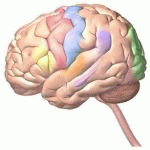Neurology
|
23 october 2014 07:36:37 |
| Analysis of relative displacement between the HX wearable robotic exoskeleton and the user¿s hand (Journal of NeuroEngineering and Rehabilitation) |
|
Tweet Background:
Advances in technology are allowing for the production of several viable wearable robotic devices to assist with activities of daily living and with rehabilitation. One of the most pressing limitations to user satisfaction is the lack of consistency in motion between the user and the robotic device. The displacement between the robot and the body segment may not correspond because of differences in skin and tissue compliance, mechanical backlash, and/or incorrect fit.FindingsThis report presents the results of an analysis of relative displacement between the user`s hand and a wearable exoskeleton, the HX. HX has been designed to maximize comfort, wearability and user safety, exploiting chains with multiple degrees-of-freedom with a modular architecture. These appealing features may introduce several uncertainties in the kinematic performances, especially when considering the anthropometry, morphology and degree of mobility of the human hand. The small relative displacements between the hand and the exoskeleton were measured with avideo-based motion capture system, while the user executed several different grips in different exoskeleton modes.#xD;
Conclusions:
The analysis furnished quantitative results about the device performance, differentiated among device modules and test conditions. In general, the global relative displacement for the distal part of the device was in the range 0.5-1.5 mm, while within 3 mm (worse but still acceptable) for displacements nearest to the hand dorsum. Conclusions over the HX design principles have been drawn, as well as guidelines for future developments.. |
| 69 viewsCategory: Neurology |
 Time-dependent activation of MAPK/Erk1/2 and Akt/GSK3 cascades: modulation by agomelatine (BMC Neuroscience) Time-dependent activation of MAPK/Erk1/2 and Akt/GSK3 cascades: modulation by agomelatine (BMC Neuroscience)The formation of source memory under distraction (Behavioral and Brain Functions) 
|
| blog comments powered by Disqus |
MyJournals.org
The latest issues of all your favorite science journals on one page
The latest issues of all your favorite science journals on one page



